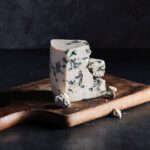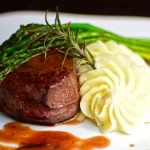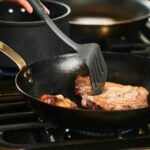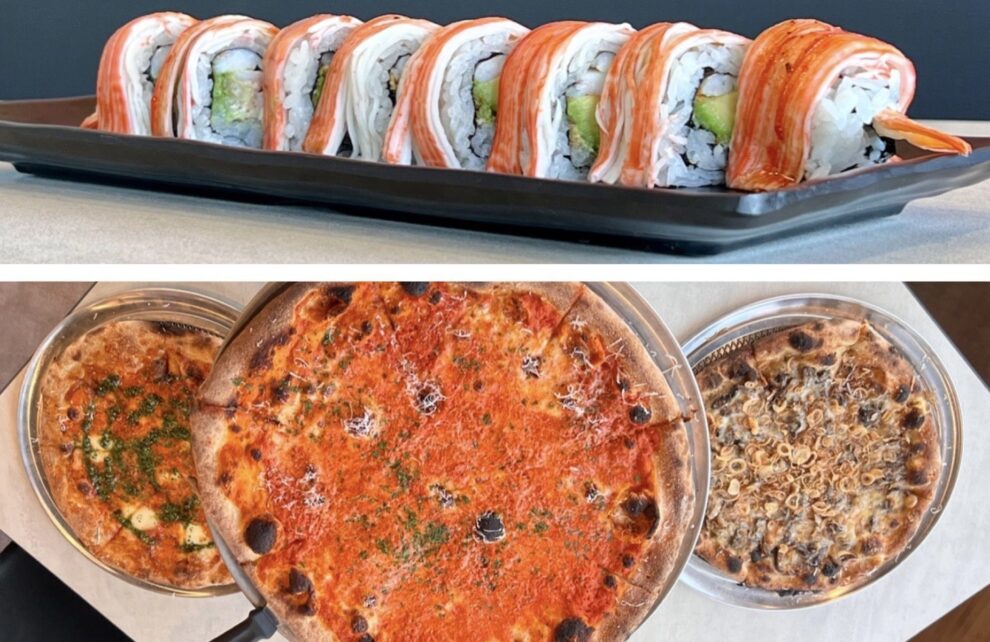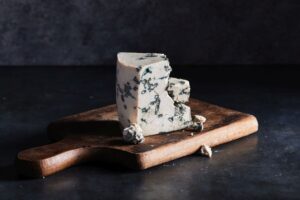The idea combines two very popular takeout and delivery concepts. “So we tried to find something that had everybody covered,” said one of the owners.
The idea came to Mark Liprie one night about eight years ago.
Liprie, a restaurant and hospitality consultant in Delaware, was out with his wife, eating wood-fired pizza in a friend’s restaurant.
“Whenever we had people in from out of town, they always wanted to go there,” Liprie said of the now-closed restaurant.
“So happened this one week, Kim and I had been there on a Tuesday and my mom wanted to go on Wednesday and then Friday we had friends up from South Carolina. As you know, they’re not getting any good pizza in South Carolina. We’re sitting at the table and [the owner] comes up and says, ‘Guys, why are you here for a third night in a row?’ And I looked right at him and I said, ‘Well, you know, if you had sushi here, we’d be here every night of the week.’”
On went the lightbulb, and Liprie scribbled the idea for a such a hybrid restaurant on a napkin and tossed it into a desk drawer at home.
When the pandemic shut down the world, he was cleaning out his desk and found the napkin. “I’m like, ‘You know what? This could be just goofy enough.’ During COVID, everybody’s freaking out. ‘I want pizza, I want a salad, I want sushi.’ So we tried to find something that had everybody covered.”
He talked to his wife and they enlisted friends Jill Difebo and Matthew Hans as partners. They agreed to give it a shot.
Two years ago, they opened Pizzeria Maki as a takeout spot with a patio in Greenville, Del., and over the summer opened a second location with 24 seats in a strip mall in Glen Mills, Delaware County.
It’s not the only pizza-and-sushi combo restaurant out there in America. Ruckus Pizza, a small chain out of Raleigh, N.C., goes even one better, offering a bar.
Though the idea combines two popular sectors of the fast-casual restaurant market, it’s labor-intensive, requiring separate teams working in two kitchens. Corey Palmer and Jamar Caldwell make their dough, aging it three days, before baking pies in an electric Pizza Master. Diego Soriano, a veteran of sushi restaurants in northern Delaware and the Brandywine Valley, makes the maki at stations in the front. To save time, there’s a machine that flattens and shapes cooked rice into sheets; all the cook has to do is press a sheet of nori on top and start building the rolls, or press fish into pieces of nigiri.
The pizza is old-school New York-style, done in 12- and 16-inch rounds (plus 12-inch gluten-free pizzas) with a wide variety of toppings. There’s also an oval tomato pie. Pay particular attention to the Royale, a rich pie topped with brandied mushroom cream, Swiss and mozzarella, and fried shallots, and the Hot Honey with ricotta, honey, chopped hot cherry peppers, and shredded mozzarella.
As for the sushi, “one of the goals is we wanted to do everything as best as we can, but still keep it approachable and come up with some flavors that take care of everybody,” Liprie said.
That means simplicity. “We stick to five of the basic fish that are out there: tuna, salmon, yellowtail, scallop, and eel,” Liprie said. “We did add octopus to broaden what we can create.”
The roll menu includes higher-end offerings such as bluefin fatty tuna with black tobiko and a truffled black garlic soy glaze as well as the more ubiquitous salmon and tuna rolls. Reflecting Soriano’s Mexican heritage is a yellowtail al pastor roll with torched pineapple and serrano pepper. There also are bowls.
“We’re trying to come up with creative things that are approachable,” Liprie said. “Look, I love the sushi that the high-end places put out, but I don’t need monkfish liver or uni. I don’t think fits what we do. I look at this as more of a luxury takeout, but it’s attainable.”
They even have an everything bagel maki, which has smoked salmon and masago cream cheese, and is topped with salmon, cucumber, pickled red onion, and everything bagel chip dust. It’s served with caper aioli.
Pizza and sushi sales are equal in terms of dollars, Liprie said, though more pizzas go out the door. The typical order is a large pizza and two rolls.
The two menus meet in the topped knots. The pizza kitchen bakes four garlic knots in small aluminum pans, leaving cheese in the bottom to develop a crispy frico. Designed to be lifted out and eaten with chopsticks, they get such toppings as honey, bacon, and serrano. The crab Rangoon was Palmer’s contribution.
It was conceived as a calzone, but Palmer decided to top a batch of knots with the rich crab. “I didn’t have a fork there and they were ridiculously hot coming out of the oven,” Liprie said. “I grabbed a pair of chopsticks and as soon as I put that pair of chopsticks in to pull out that Rangoon knot, I said, ‘This is it.’”
“The fact that it’s kind of a weird idea is not lost on us,” Liprie said. “But there’s weird and there’s weird.”
Source : The Philadelphia Inquirer

